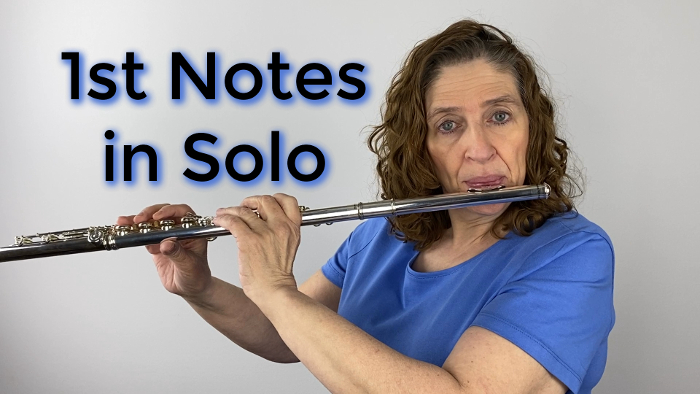Do you plan the very first note of your solo performance? What you do with that first note is crucial. It sets the tone for the whole piece, literally and figuratively.
Start with the Sound You Want
Your goal is to have the first note come out with a fabulous tone, vibrato, liveliness, and color. The first note tells the audience what’s coming next.
We all know what we want to sound like when we perform. To get there, it’s important to start there.
But sometimes we think that the first note is too short to put on some vibrato. Perhaps we don’t consciously decide to not put on vibrato. It just doesn’t happen.
Always ON Vibrato
Here’s how to make sure that the very first note has presence:
Decide now, that every time you pick up your flute, it’s as if a switch has flipped and your vibrato is turned on. Your vibrato default setting is “ON.”
Convince yourself that your vibrato setting is always on. Then when you start a piece, the first note comes out with vibrancy and life. Your sound will be lively from the start.
If I start without vibrato, it starts off dead. There’s no life to that first note. But the quality when it has a liveliness is amazing.
When that first note is not long enough to have vibrato, you can still decide what you want to do with it. You can know exactly what tone you are looking for. You can play around with embouchure placement. You can move it around on your lip. You can adjust that angle of your air across the lip plate strike edge. Figure out where you get the best tone. Then every time you pick up your flute to play that again, you have the makings of a lively tone.
Lively Start
Then, even though it’s not long enough to hear vibrato, you’ll start with that tone having liveliness and vibrancy. It’s going to start alive. The audience can tell that you’re excited for something that’s coming.
Are there times where I might not want vibrato? Sure. The opening of Afternoon of a Faun. Most flute players start with no vibrato. Part of the reason in this opening is to conserve air. You know what I mean if you’ve played this piece. But it also gives you the ability to change the colors. You’re manipulating your vibrato and that opening note, but you’re doing it consciously. You’re doing it because that’s the color you want. That’s what you want to create.
You might also start the Fauré Fantaisie without vibrato, as many intermediate flutists often do. But it’s more often that it’s just not even thought about what you want to do with that note.
It just starts with no vibrato without any rhyme or reason. Now, I might want to start off with no vibrato, but I’m going to think about it. What if I were to start with vibrato?
We need to start with vibrato unless it’s a conscious thought to not. But I think it’s more often than not, we start with no vibrato, with no real reason, except that you just didn’t put vibrato on it.
Start with your vibrato going. Your motor is going right off the bat.
Because when you start with that vibrato, it has a life and movement, and it’s going somewhere right away.
Record Yourself
Record yourself when you’re practicing for a performance. Identify how you want to set up that first note for what is going to come. Determine whether that first note has a fabulous tone and vibrato and liveliness and color. Does it tell your audience what’s going to be coming?
The first note should make the audience sit up in their chairs, on the edge of their seats, excited for what is to come.
Listen to yourself. Plan that first note with just a little bit more thought. And it can change your whole piece. By doing that, it really can change your whole piece because you now have a different attitude about the whole piece.
Focus on that first note!
Have fun!
DoctorFlute
Watch me demonstrate this using:
Mozart Flute Concerto
Fauré Fantaisie
Jade from Ferroud’s Three Pieces
Playing the First Notes of Your Solo – FluteTips 186

FluteTips 84 Adding Vibrancy to Your Tone on the Flute

Producing a Lively Sound on the Flute – FluteTips 115

